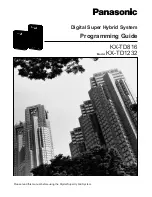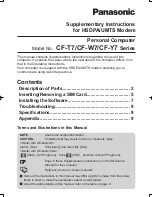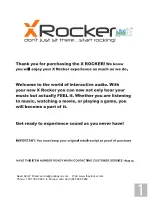
B5.6
T855 Fault Finding
© Copyright Tait Electronics Limited August 2004. All rights reserved.
5.5.3
Oscillator Stability
5.5.3.1
TCXO
While maintaining a low level unmodulated RF input to the receiver, loosely cou-
ple into the first IF an additional high level signal at 45MHz. You should now hear
a constant low frequency beat note.
Tap the TCXO with a finger and replace it if the beat note permanently changes.
5.5.3.2
Second IF
While maintaining a low level unmodulated RF input to the receiver, loosely cou-
ple into the second IF an additional high level signal at 455kHz. You should now
hear a constant low frequency beat note.
Adjust L385 for “zero beat".
5.5.4
Demodulator Output
Apply an on-channel RF signal modulated by 1kHz with ±3kHz (±2.4kHz)
[±1.5kHz] deviation at an amplitude of –65dBm.
Connect an oscilloscope probe (DC coupled) to TP314 (audio output).
Check that an audio signal of approximately 800mV peak to peak is present.
Optimum tuning of the quad coil (L390) for minimum audio distortion (with a “flat”
audio response) should coincide with maximum audio amplitude and a DC level of
approximately 1.7V.
5.5.5
IF Distortion
If the audio distortion is still high after careful IF alignment (Section 3.7), sweep the IF to
investigate the bandpass response.
Apply an on-channel RF signal modulated at 10Hz (sine wave) with ±12kHz
(±9kHz) [±6kHz] deviation at an amplitude of –80dBm.
Connect the modulating 10Hz audio signal to the “X” input of an oscilloscope and
observe the 455kHz IF input to SK320 pin 3 via a suitable RF probe on the “Y”
input. Alternatively, if you have an RSSI PCB fitted, use an oscilloscope probe for
the “Y” input to monitor the RSSI output voltage at pad P238 (RSSI test point) or
pin 5 of D-range 1 (PL100). This will give a demodulated log response and only
the top half of the wave forms shown in Figure 5.2 and Figure 5.3 will be dis-
played on the oscilloscope screen.
Note:
The “X” input should be DC coupled.
Summary of Contents for T800 SL2 25W
Page 8: ...8 M8SL2 00 002 812 Copyright Tait Electronics Limited August 2004 All rights reserved...
Page 10: ...AII M8SL2 00 002 812 Copyright Tait Electronics Limited August 2004 All rights reserved...
Page 20: ...BII M8SL2 00 002 812 Copyright Tait Electronics Limited August 2004 All rights reserved...
Page 130: ...CII M8SL2 00 002 812 Copyright Tait Electronics Limited August 2004 All rights reserved...
Page 242: ...DII M8SL2 00 002 812 Copyright Tait Electronics Limited August 2004 All rights reserved...
Page 308: ...EII M8SL2 00 002 812 Copyright Tait Electronics Limited August 2004 All rights reserved...
Page 320: ...FII M8SL2 00 002 812 Copyright Tait Electronics Limited August 2004 All rights reserved...
Page 346: ...G1 6 M8SL2 00 002 812 Copyright Tait Electronics Limited August 2004 All rights reserved...
Page 378: ...HII M8SL2 00 002 812 Copyright Tait Electronics Limited August 2004 All rights reserved...
















































